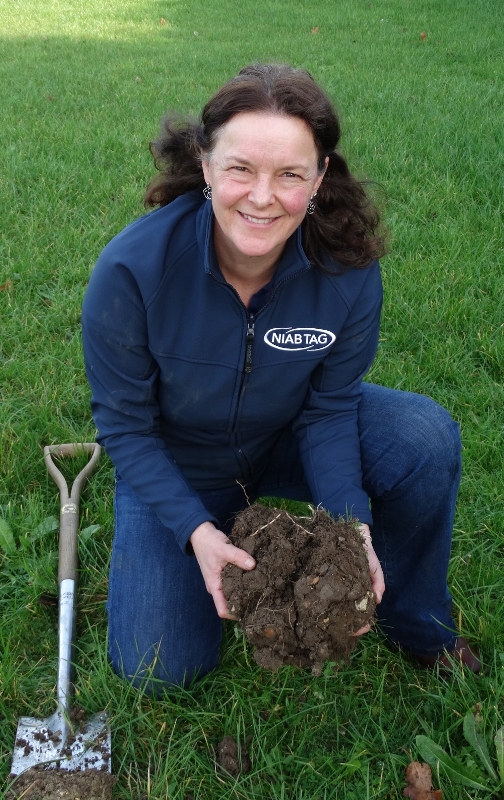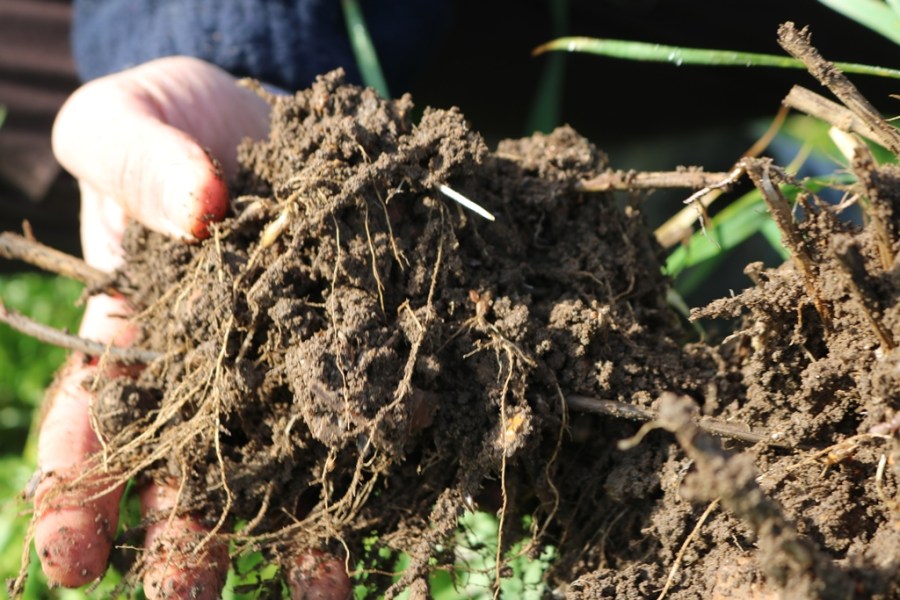Soil gives life to arable crops, playing an important part in the growth, health and overall productivity of a plant. But while caring for a crop’s every need, it’s often the health of the soil itself growers leave untended. CPM investigates.
Carbon is as important as nitrogen.
By Melanie Jenkins
Soil: it supports the vital power source behind crop production. So how has it also become degraded to the point that it’s only productive through inorganic inputs?
According to Mike Harrington of Oxon-based consultancy Edaphos, modern farming practices over the past 70 years have encouraged the use of artificial inputs on crops, but this hasn’t involved replacing what’s lost from the soil. “This has driven the life and carbon out of the soil,” he says.
In 2015, Defra estimated that around 2.9M tonnes of topsoil was lost per year in the UK, costing farmers £9M in lost production. In total, soil erosion was estimated to cost the UK £45M a year in 2015. There’s increasing pressure on farmers to improve soil health, so what can be done and where’s the best place to start?
Most soils, with good management, are capable of both growing crops and supporting ecosystems, says Elizabeth Stockdale at NIAB. In the long term, improving soil health will cut costs, improve efficiencies and produce better crops.
Some of the healthiest soils on the planet are believed to be those in forests, due to the natural cycle of carbon and decomposition, and the aeration of soils from extensive rooting networks.

Modern farming practices have driven the life and carbon out of the soil says Mike Harrington.
Some agricultural systems have a tendency to release this carbon without replenishing it, however, as well as damaging fungi, mycorrhizae and worms. A poor soil isn’t really poor, it’s just in a reduced successional state that doesn’t suit the crops we wish to grow, says Mike.
Plants are integral to the environmental system as they’re net carbon importers, he explains. “Functioning correctly soil is a living entity, an interdependent whole. It’s a continuous cycle of expansion, contraction, digestion and mineralisation.”
The crumb structure of soil changes between systems and land uses. “The more you do to it the less biological structure you have,” says Mike.
It’s a case of looking at soils as a habitat for organisms, cells and roots, and the aim of good soil management is to get chemical, biological and physical aspects all in balance, explains Elizabeth.
Assessing soil condition, not just chemically, but physically and biologically, gives an indication of what areas could be improved. “Can you get a spade into the soil easily,” she asks. “Is it aerobic, open and porous? As soil biology gets worse, air becomes a big issue – soil gets tighter and then roots can’t penetrate.”
Observing the physical state in different areas of a field and farm can give a great indication of the state of soil. Sampling with a corer will help to assess chemistry but to assess the soil structure you need to look with a spade, advises Elizabeth.
In gateways the structure is likely going to be in big blocks, whereas under hedgerows the spade will go in nice and easily. “Compare the two digs as this will give an immediate sense of how the soil could be in the middle of the field.”
Assess whether the soil system is improving or degrading. It might be that the nutrients are available in the soil but cannot be taken up by the plants due to a biological issue, says Mike.
The biology makes a huge difference to soil management, he continues: good biology improves aggregate structure which allows for large and effective root systems. A better crumb structure helps manage moisture, so crops will produce balanced growth. They’ll be more resilient to stress and disease, and more productive, he adds. There’ll be higher nutrient retention and cycling and more aerobic microbes, while pathogens will be inhibited.
Direct drilling is an option to preserve carbon, but in 60-70% of instances where it’s practiced, it’s not working well, says Mike. “Often the soil is in a terrible condition when farmers go into direct drilling.” In these situations, fundamental issues such as drainage and aeration must be addressed before changing, he advises. “The very first principle is to get air into the soil.”
In poor soils with low organic matter, plants can be susceptible to disease and lodging. Straw won’t break down in this system – so just ploughing straw in can be detrimental rather than beneficial, explains Mike. In a good system, straw will be digested and nutrients recycled.
Modern agriculture has seen nitrogen fertiliser used to drive crop growth but in nature, it’s carbon not nitrogen that drives all systems, he explains. Reverting to a more natural approach to achieve healthy crops can reduce the reliance on chemical inputs.
How to reduce inputs is a challenge, however. “When we get a problem, we tend to deal with it through increasing output.” That’s alright if the soil is healthy but it causes the soil cycle to reverse if not, leading to degradation.
Healthy soils will encourage a more efficient use of fertilisers, says Mike. “We’re not seeing the natural capacity of soil because we’re always applying nitrogen. It could be worth leaving a small strip without fertiliser to see what the natural system is like.”
The use of cover crops is being widely adopted to help improve organic matter, bacteria, fungi, mycorrhiza and to reduce leaching. “Cover crops are important but can also be ineffective,” warns Mike. “Some are very good at getting through tight soils but they need to be doing their job properly. The costs and benefits can be negligible if they aren’t grown effectively.”
Grown correctly, cover crops bring lots of benefits to the chemical, physical and biological structure, says Elizabeth. “But it’s important to plan for establishing the following cash crop before planning the cover crop.” Think about the bulkiness of the cover crop and machinery limitations, as well as when to establish the following seedbed before deciding which cover crop to plant.

The aim of good soil management is to get chemical, biological and physical aspects all in balance, says Elizabeth Stockdale.
Grass leys could be a good solution where farmers have livestock to graze them – diversity is good as it leads to stability, which leads to resilience, says Elizabeth. She advises changing the crop and length of rotation to ensure pests don’t take over below ground.
So how do you know if things are improving? A few simple measurement techniques will indicate the progress made with soil health. These range from assessing whether soil crumb has changed and is nearer a fine texture, to identifying ground beetle and earthworm levels. “Beetles can indicate predator invertebrates and so are worth monitoring,” says Mike.
“Earthworms can make a big contribution to nutrient availability and putting soil through an earthworm will take out 99.7% of fusarium mycotoxins.” A healthy population is 25 earthworms per cubic foot and this leads to an increase in available nitrate, phosphorous, exchangeable potassium and magnesium. This’ll also increase structural stability, cation exchange capacity and reduce bulk density, he says.
From burying underwear to using a spade, or even looking under a microscope, farmers will be able to see the difference between the worst areas where soil biology is poor and where there’s more healthy activity, explains Elizabeth.
It’ll always be that site-specific solutions work best, says Mike. “Don’t force something in the wrong situation, instead try something else. No one way is right, it’s just about balance, understanding how to manage your soils and realising that carbon is as important as nitrogen.”




